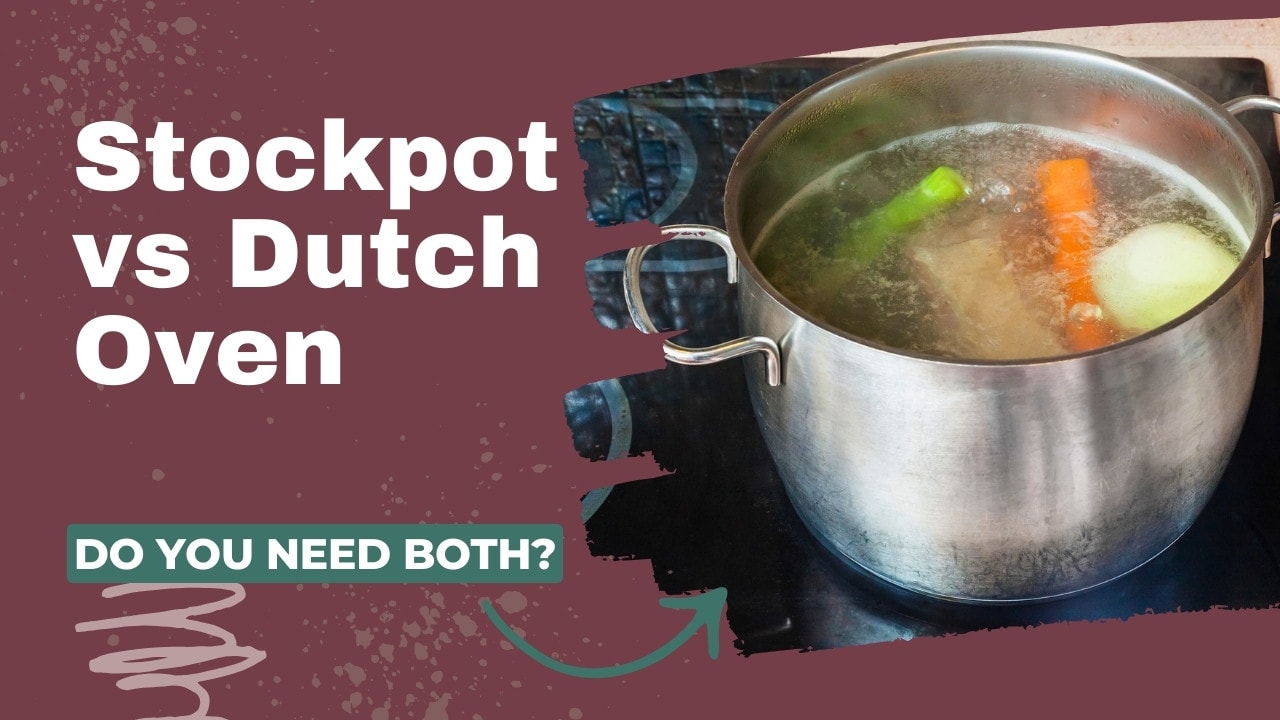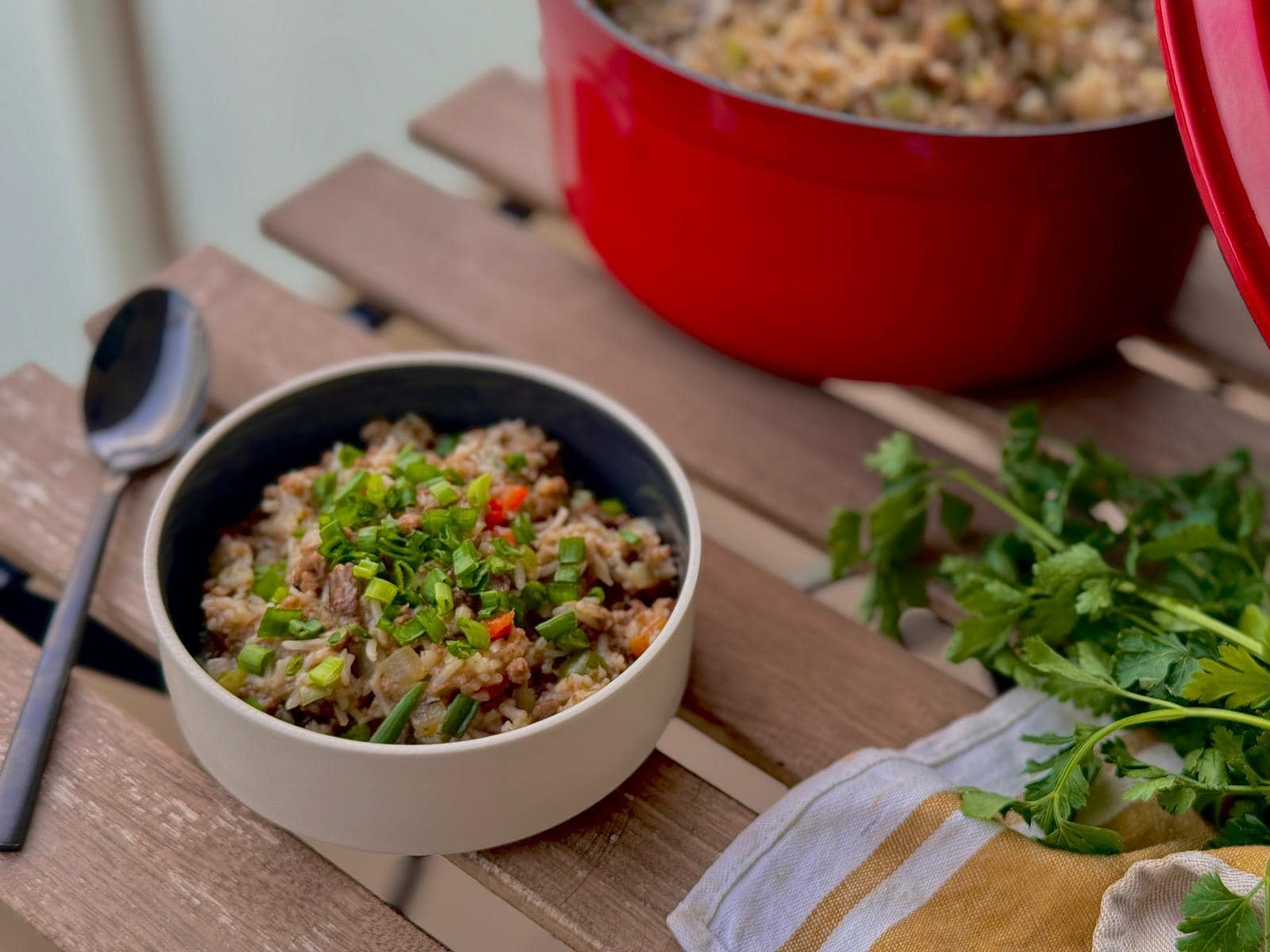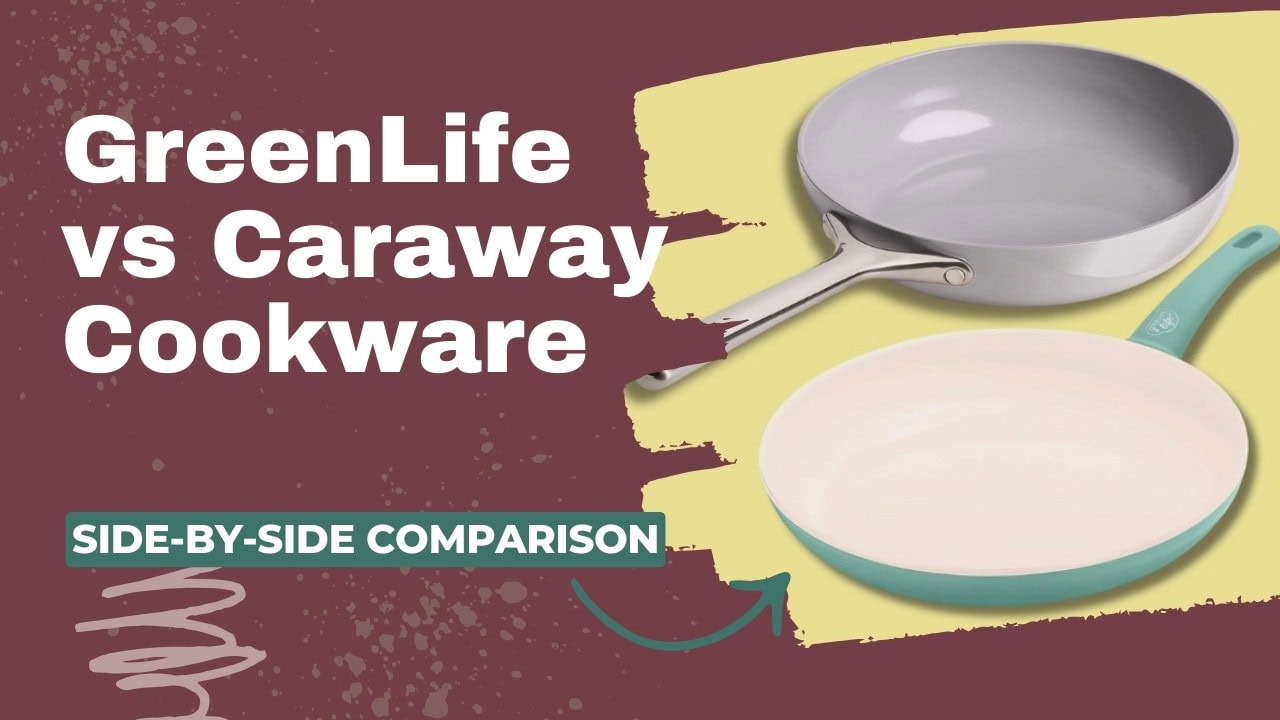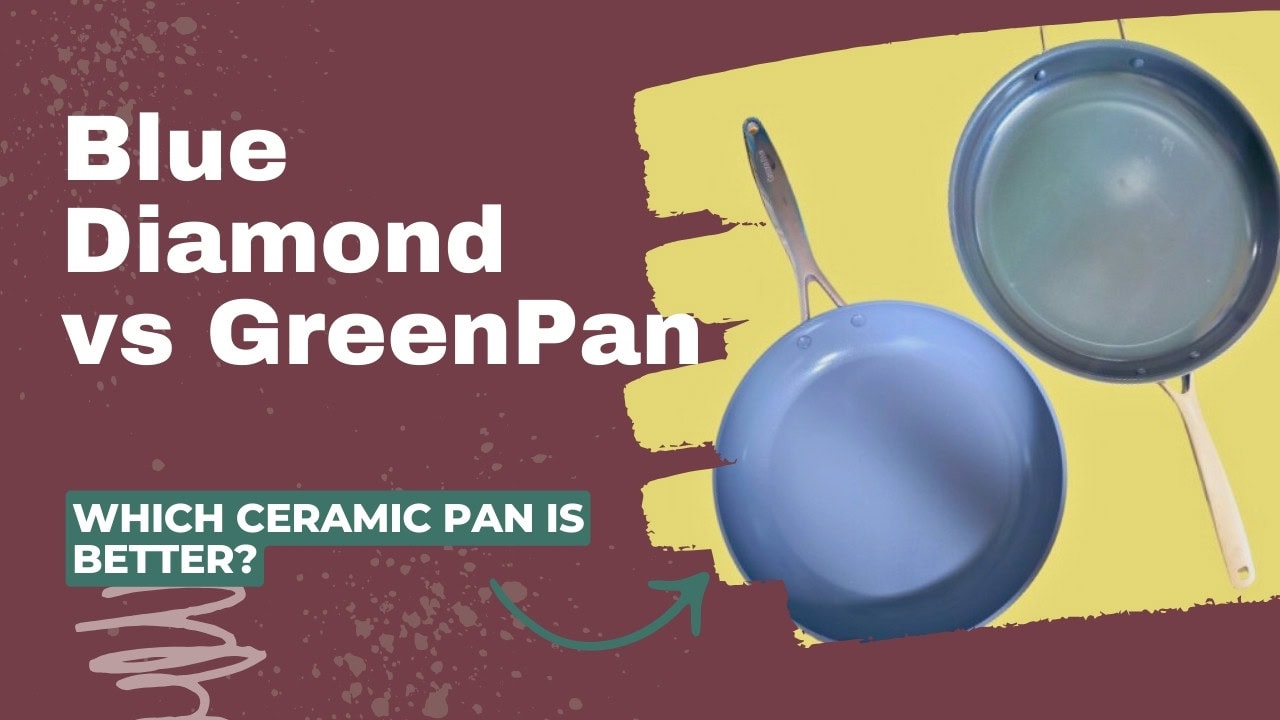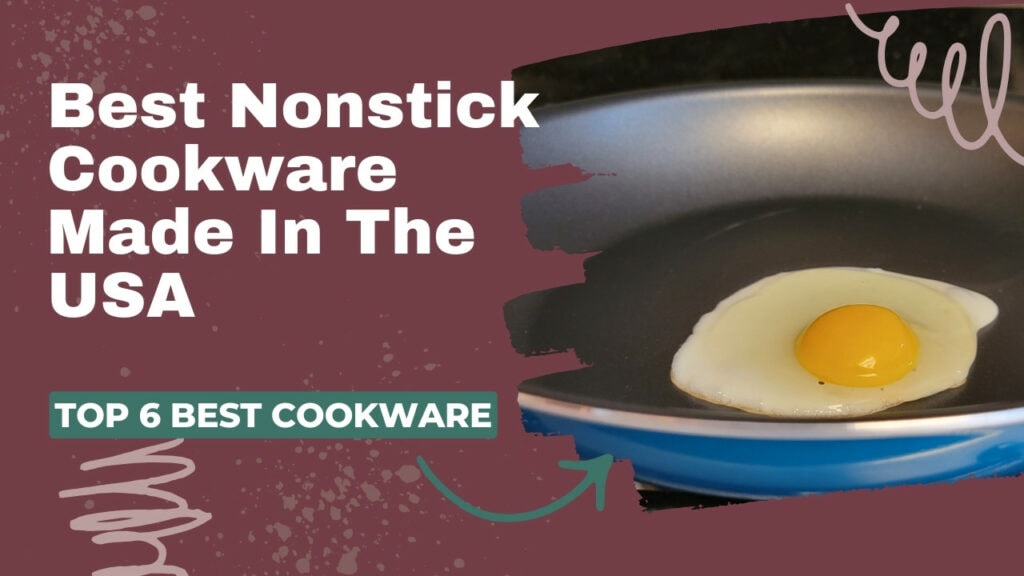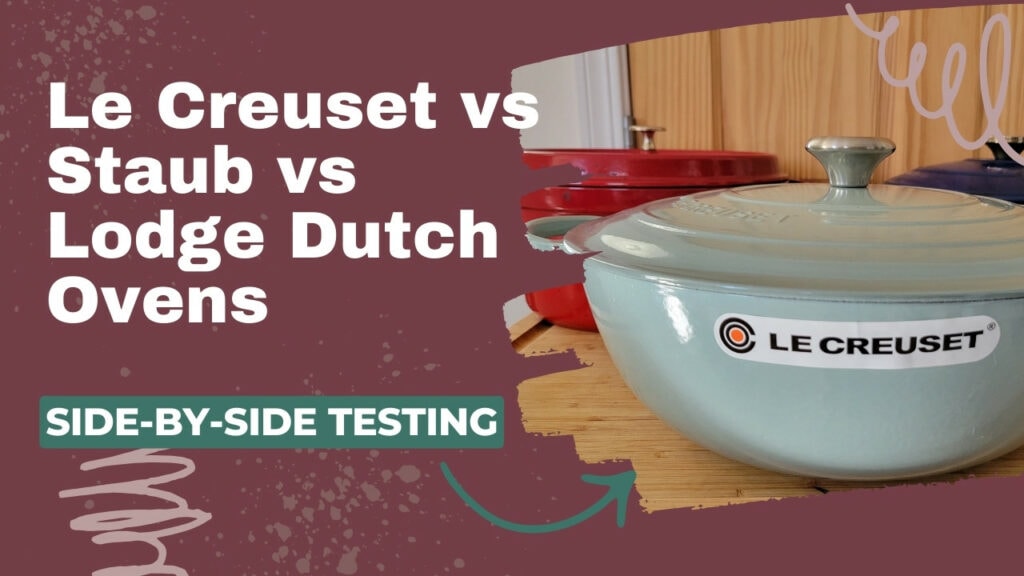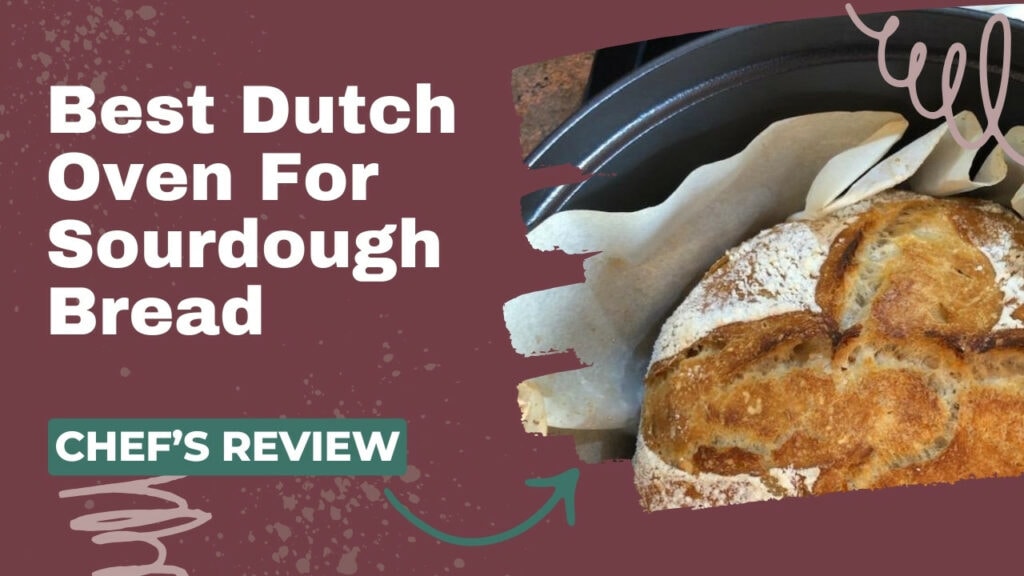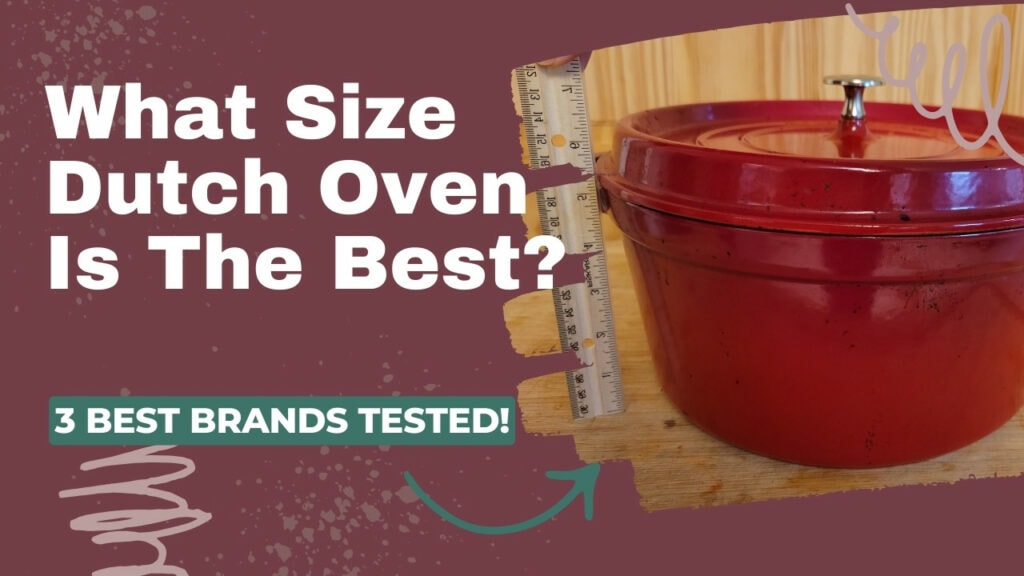I love making big batches of food to freeze and save for leftovers. But I have a small kitchen, and I don’t love washing big pots. Two of the largest pots you’ll find in a kitchen are Dutch ovens and stock pots. They’re both used for making soups and stews – among other things – so do you really need them both?
Let’s talk about the difference between a stock pot and a Dutch oven. And I’ll share how and why I use both of them, even in my little-bitty kitchen.
What’s the Difference Between a Stockpot and a Dutch Oven
Dutch ovens are heavy pots (usually made from cast iron) with medium-height sides and thick lids. Stock pots are lighter (made of aluminum or stainless steel) with taller sides and a glass or thin metal lid. Dutch ovens and stock pots are interchangeable in some recipes – but not in others.
Stock pots are best for making soups, stocks, and stews and for boiling water or pasta. Dutch ovens are frequently used both on the stove and in the oven for braising, stewing, or baking bread.
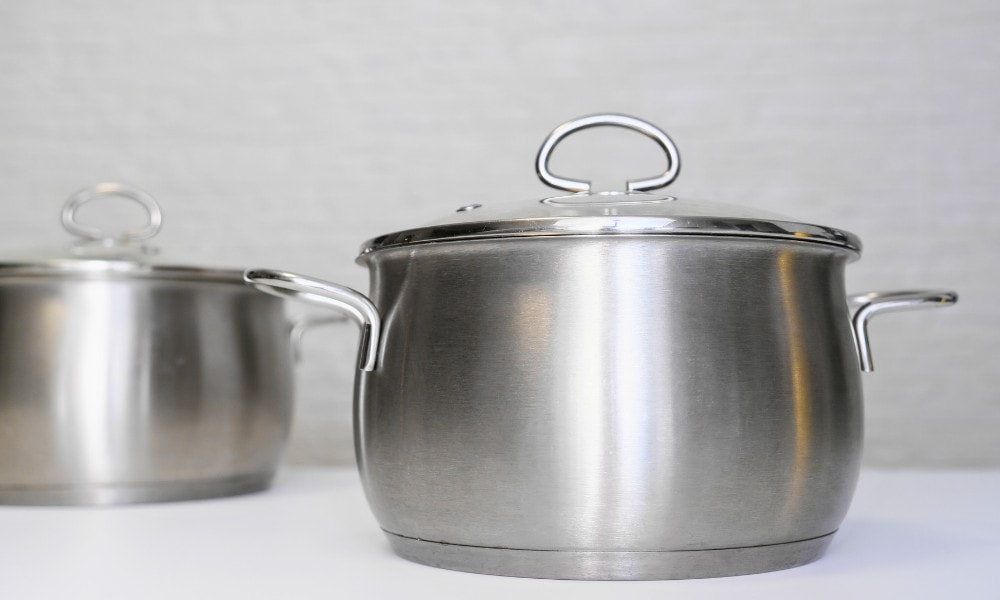
| Dutch Oven | Stock Pot | |
|---|---|---|
| Weight | Heavy (15 lb +/-) | Much lighter (4 lb +/-) |
| Capacity | 2 qt to 13 qt + | 8 qt to 15 qt + |
| Shape | Round or oval with medium-height sides | Round with tall sides |
| Material | ✅ Cast iron ✅ Enamel cast iron ✅ Ceramic | ✅ Stainless steel ✅ Aluminum |
| Heat retention | Very good | Less efficient |
| Use | ✅ Slow cooking ✅ Braising ✅ Soups ✅ Roasts ✅ Baking bread | ✅ Soups ✅ Stews ✅ Boiling water ✅ Stocks ✅ Pasta |
| Appearance | Colorful options available | Simple silver look |
Materials and Design
For me, the ideal material for a Dutch oven is enamel cast iron, but there are also good options available in raw cast iron and pure ceramic.
Enameled cast iron offers a lot of colorful finishes, along with superior heat retention and a nonreactive surface. The sides on these pots are generally lower to make it easy to move ingredients around in the pan.
The best stock pots are made from 3 or 5-ply stainless steel. The aluminum core allows these pots to heat rapidly, but their heat retention is not as good as the enamel cast iron. (This may be a positive characteristic if you want your pot to cool more quickly!)
The stainless steel surface is durable and non-reactive. These pots have a very simple, silver appearance with tall sides that allow you to fit more liquid in them.
If you buy a high-quality option of both of these pots, then you are investing in a heirloom piece. The materials are so durable that they will last a lifetime, but you have to treat them well.
A note: technically, you can buy a Dutch oven-shaped pot made out of aluminum or stainless steel. But if you ask me, these look and function more like stock pots.
Weight
Dutch ovens are significantly heavier than stock pots, which may pose an issue for those with limited strength or mobility. Stainless steel, even the fully clad options, is much lighter.
As a comparison, Made In’s 5.5-qt Dutch oven weighs 14 pounds, while the same brand’s 6-qt clad stainless steel stock pot only weighs 3.5 pounds.
When my Dutch oven is full of soup, it’s so heavy that I have to take the lid off to be able to move it to my upper oven. (The lid itself weighs 4 pounds!) A stock pot is much easier to maneuver, especially if you’re trying to drain pasta or do something else that involves pouring.
Uses
In many recipes, Dutch ovens and stock pots can be used interchangeably. Both can be used for making chili or split pea soup. But there are a few key features that make them better suited for different uses.
Dutch ovens are better for oven braising, bread baking, deep frying, and slow cooking because of their excellent heat retention and heavy, tight-fitting lids. This creates an oven within an oven that traps the moisture and returns it to the dish to prevent it from drying out.
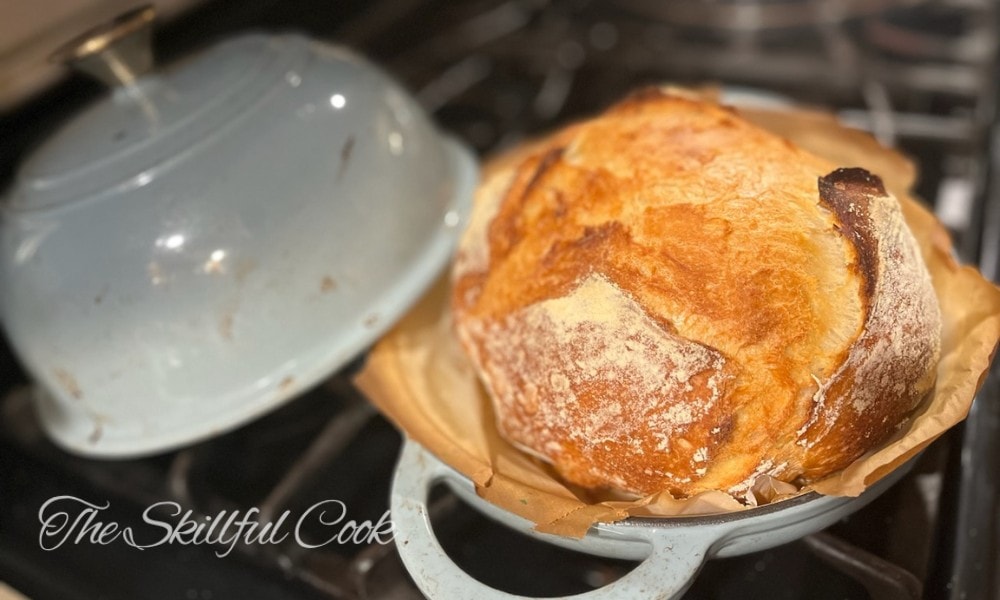
Stock pots are better for stovetop dishes like soups, stews, stocks, and boiling pasta. They heat rapidly for easy boiling and can be used with or without a lid.
How to Convert a Stock Pot Recipe to a Dutch Oven
Converting a stock pot recipe to a Dutch oven is very easy. On the stovetop, all you need to do is take off the lid, and the Dutch oven becomes a stock pot. But there are some adjustments you will need to make to your recipe.
Dutch ovens often have a smaller capacity, so you may need to make a smaller quantity, depending on the size of your pot. You will also need to add some extra cooking time as the Dutch oven takes longer to get to temperature and boil than a stainless steel stock pot.
Finally, enameled Dutch ovens can’t be used on direct high heat, so don’t crank up your stove.
How to Convert a Dutch Oven Recipe to a Stock Pot
It is a little harder to convert Dutch oven recipes to a stock pot, because stock pots lack the heavy lid. They’re also the wrong size and shape for some recipes – like bread baking.
Your stock pot might be oven-safe, or it might not be – making it unsuitable for baking, roasting, or braising. It might be too tall to fit in your oven, or not made of oven-safe materials. (Make sure the lid and handles are oven-safe, too!)
Thankfully, any stovetop recipe for a Dutch oven is easy to adapt to a stock pot. If you have a fully clad stainless steel stock pot, you can cook as directed for the Dutch oven. You may consider adding more liquid to your recipe, since cooking without the lid (or without a heavy, tight-fitting lid) will make more water evaporate.
Frequently Asked Questions
Can stock pots go in the oven?
This answer varies from product to product, depending on the material. Fully-clad stainless steel stock pots should be oven-safe, but impact-bonded ones (with an aluminum plate attached to the bottom of the pot) may not be. Since a pot’s lids and handles are often made of a different material than the pot itself, those materials may not be oven-safe (so check the owner’s manual!) Many stock pots are also too tall to fit in the oven.
Can you use a stainless steel pot instead of a Dutch oven?
Yes, in many cases you can use a stainless steel pot instead of a Dutch oven. But you will need to make some adjustments to your recipe. The stainless steel pot may not cook as quickly as a Dutch oven in the oven (assuming your stock pot is oven-safe). On a loaf of bread, a stock pot won’t create the same oven spring or crust that a Dutch oven would, but it will get it baked. For stovetop recipes, there’s not a lot of difference between the two.
Is a Dutch oven or stock pot better for soup?
Both stock pots and Dutch ovens are great for soup, but if you have to pick, go with the stock pot. It has taller sides, so you can fit plenty in there with less evaporation than the Dutch oven. It’s also much faster to bring soup in a stock pot to a boil over a Dutch oven, and easier to lift when the pot is full.
How Big Are Stock Pots?
Stock pots for home use usually have a capacity between 6 quarts and 12 quarts. But commercial stock pots can be gigantic – climbing from 15 quarts up to 32 quarts! Can you imagine how long that would take to come to a boil?!
Conclusion
As you can see, stock pots and Dutch ovens are often interchangeable, but I still feel like a well-stocked kitchen has a place for both these vessels. If you’re in the market for a Dutch oven after this article, I highly recommend checking out our round-up of nontoxic Dutch ovens to discover our favorite picks.
If you have any questions about the differences between these two pots, be sure to comment below, and I’d be happy to answer them.

